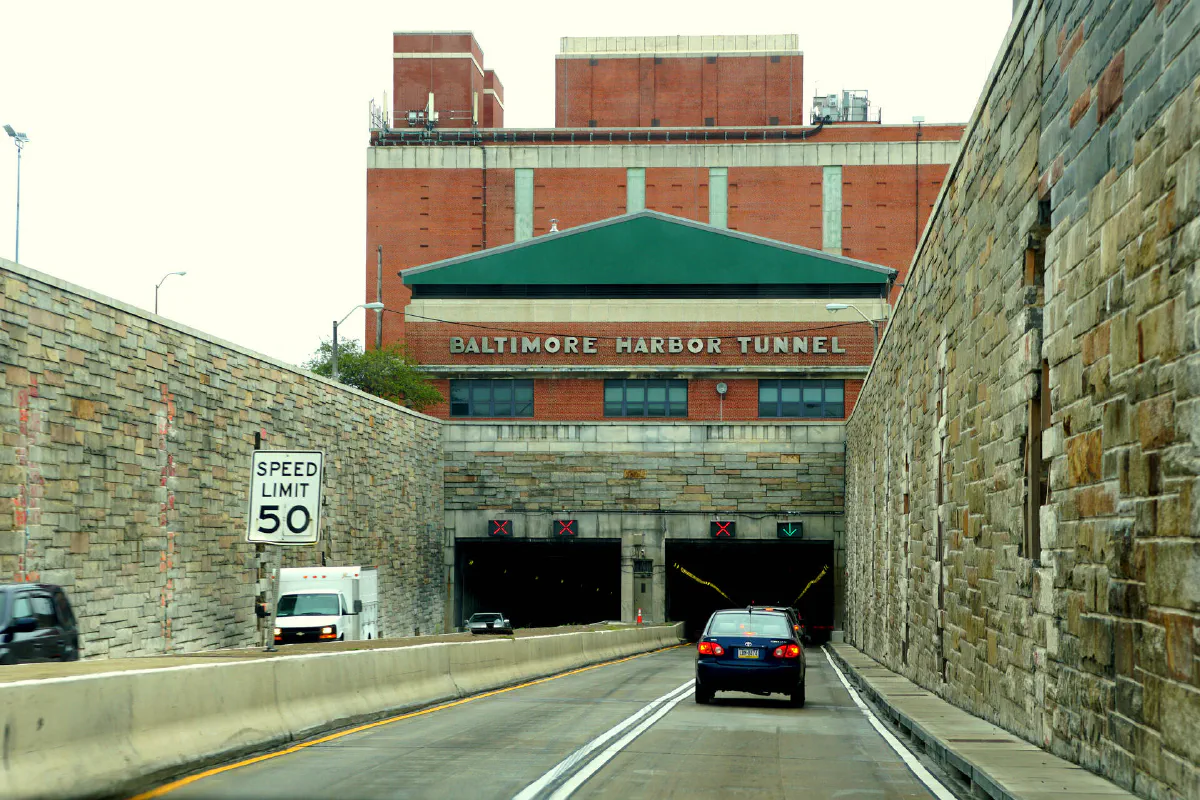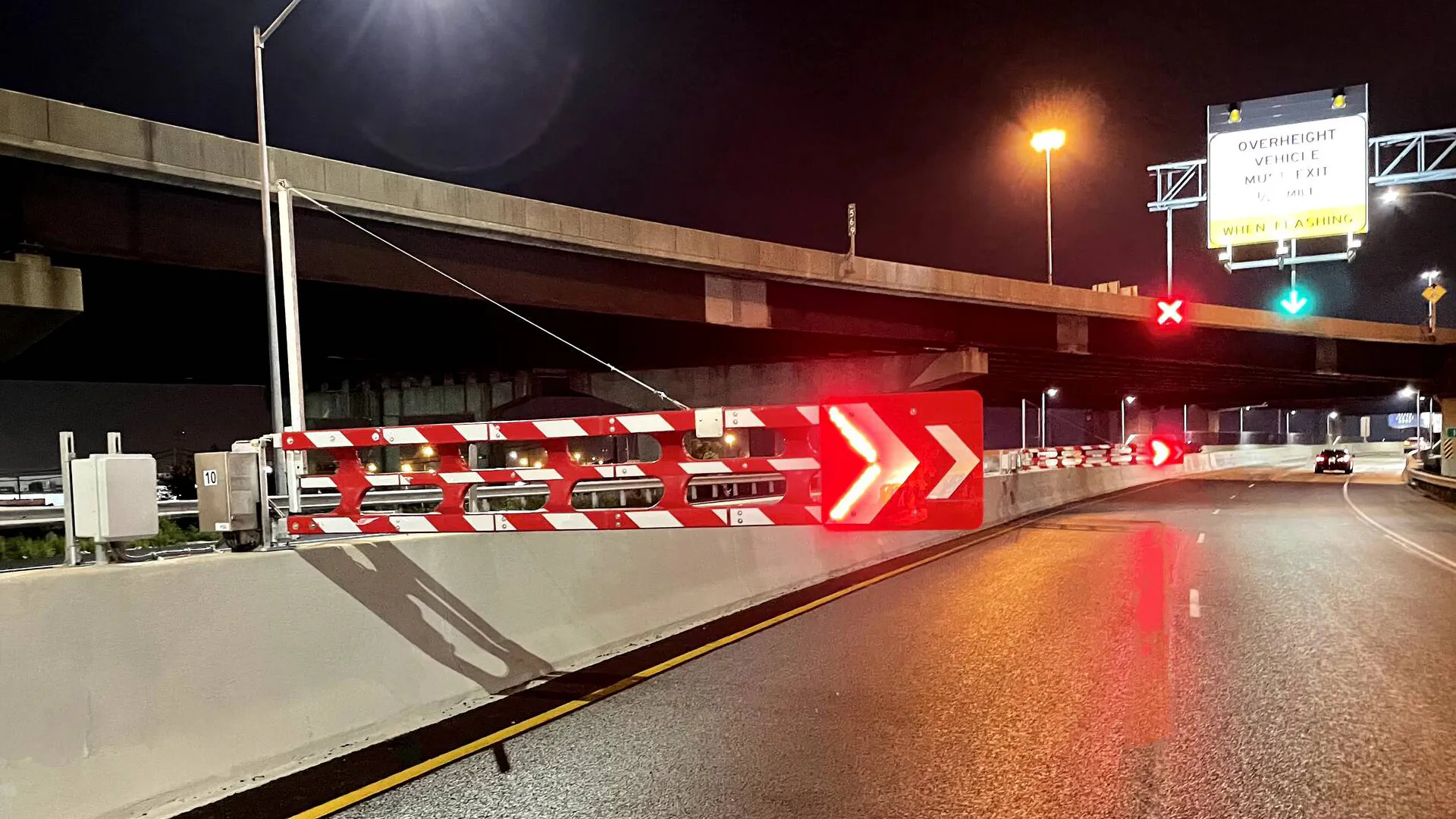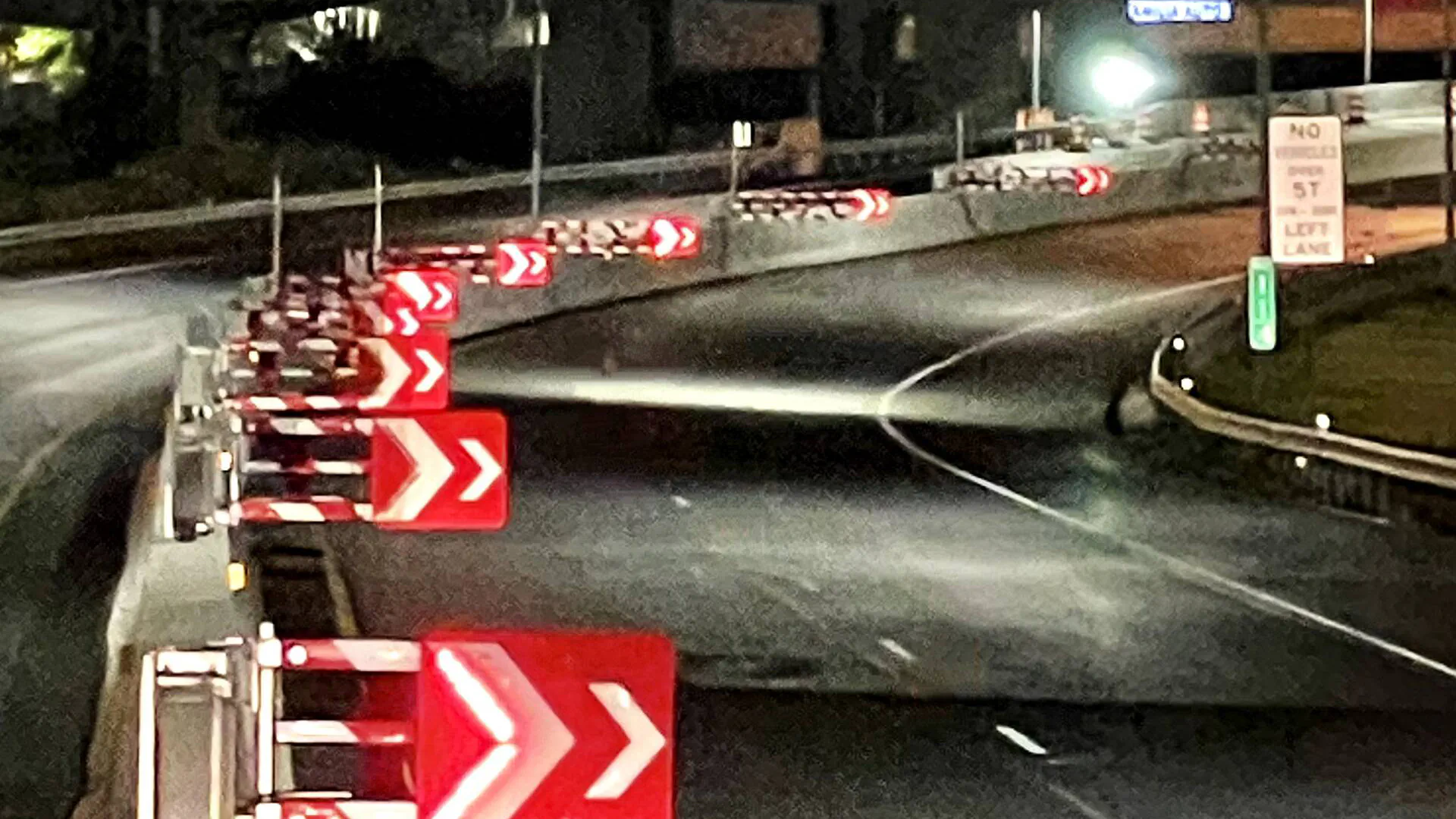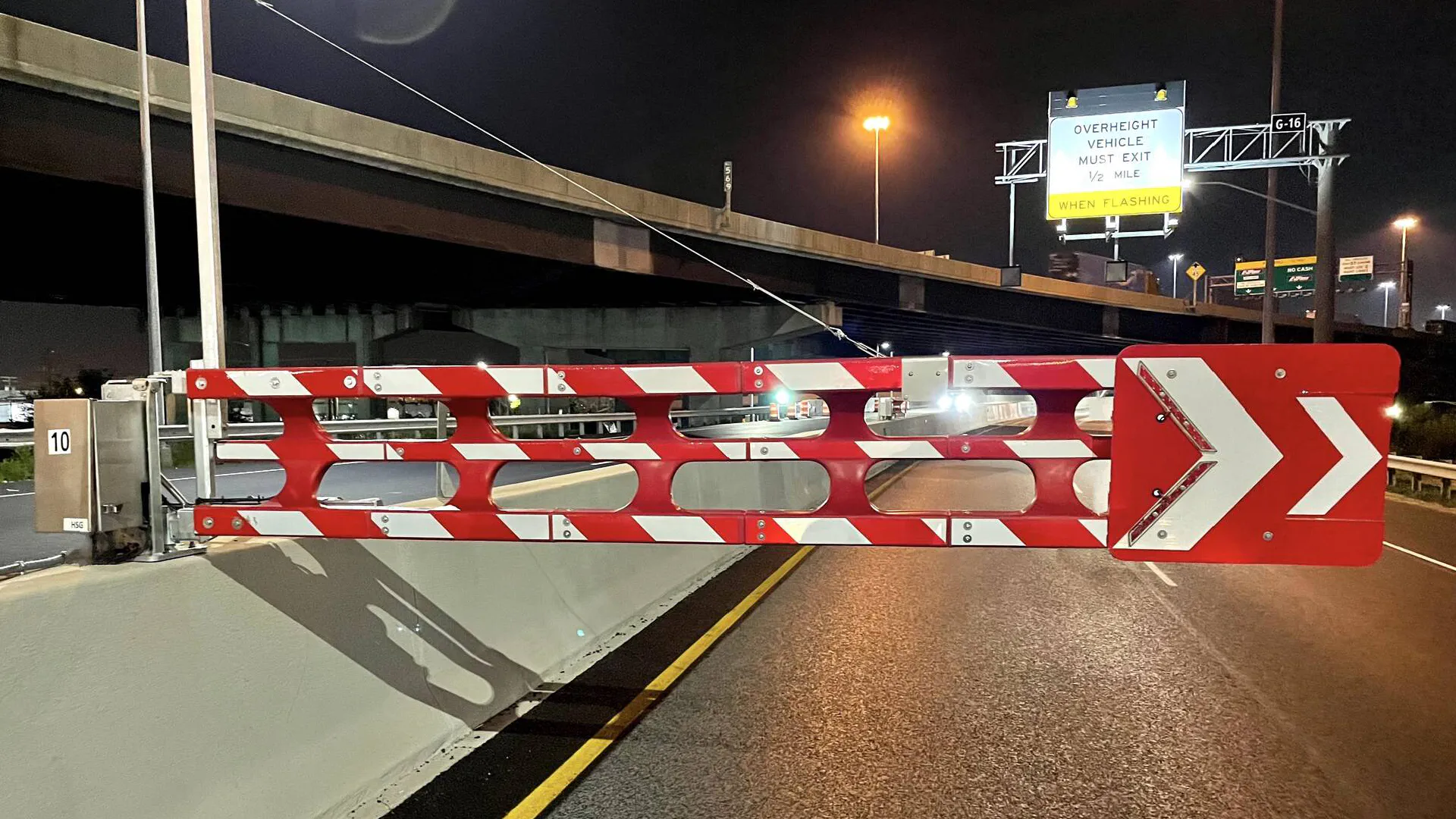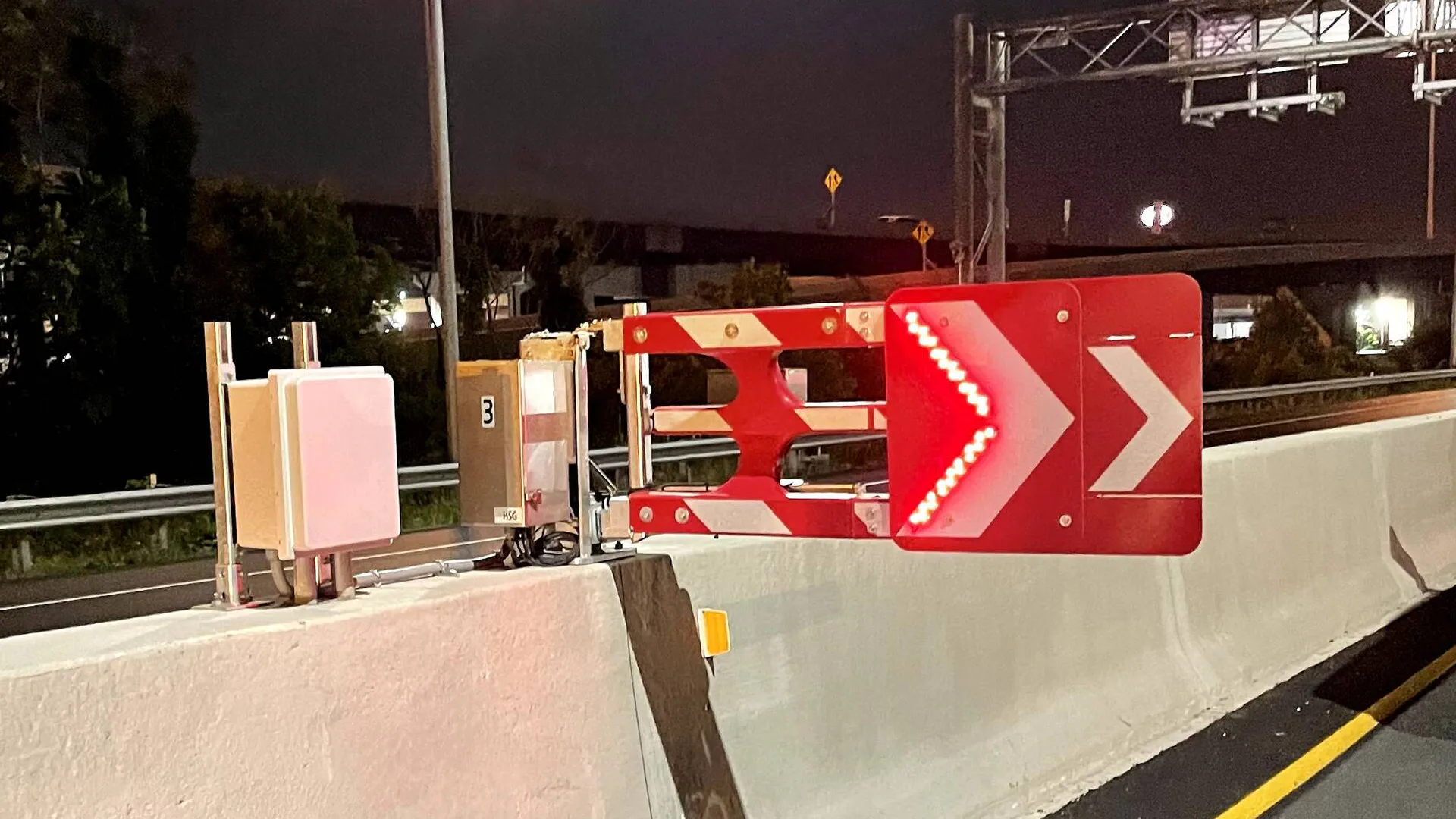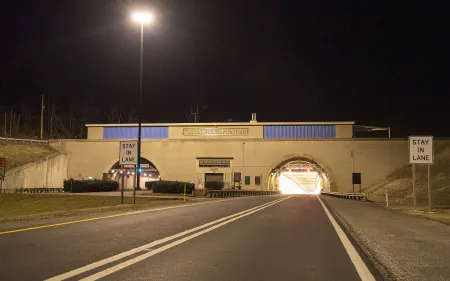Overview
The I-895 Baltimore Harbor Tunnel (BHT) is a 1.4-mile, four-lane tunnel that opened in 1957. The facility crosses under the Patapsco River and connects major north/south highways and arterial routes in Baltimore.
In 2018, the Maryland Transportation Authority (MDTA) announced a project for the rehabilitation of Baltimore Harbor Tunnel and the replacement of Canton Viaduct. The project required the implementation of an automated lane closure system along the median barrier to improve traffic control operations. Versilis’ automated gates were installed at the tunnel approaches. A real-time lane closure digital alerts system, integrated with the swing gates was also implemented to inform motorists of upcoming lane closures.
Project Scope
An Automated Lane Closure System (ALCS) was implemented by MDTA at the I-895 Baltimore Harbor Tunnel in 2022. The system was constructed to facilitate opening and closing lanes at tunnel approaches for night-time and off-peak maintenance. The solution includes horizontal swing gates and overhead use signals and arrow panels to alert road users of the closed lane and traffic shift into two-way operations.
Warning gate tapers were installed on both sides of the tunnels and have been integrated into the existing tunnel traffic control system. When a tunnel is fully closed, vehicles will be redirected first into the crossover and then into the opened tunnel. The automated lane closure system gradually alerts drivers of lane closures while preparing them to redirect to the crossover, increasing motorist compliance and safety. Versilis’ swing gates integration with HAAS Alert Safety Cloud® allows real-time notifications to oncoming motorists through navigation applications like Waze. This indicates to the driver that automated gates are in a deployed position.

